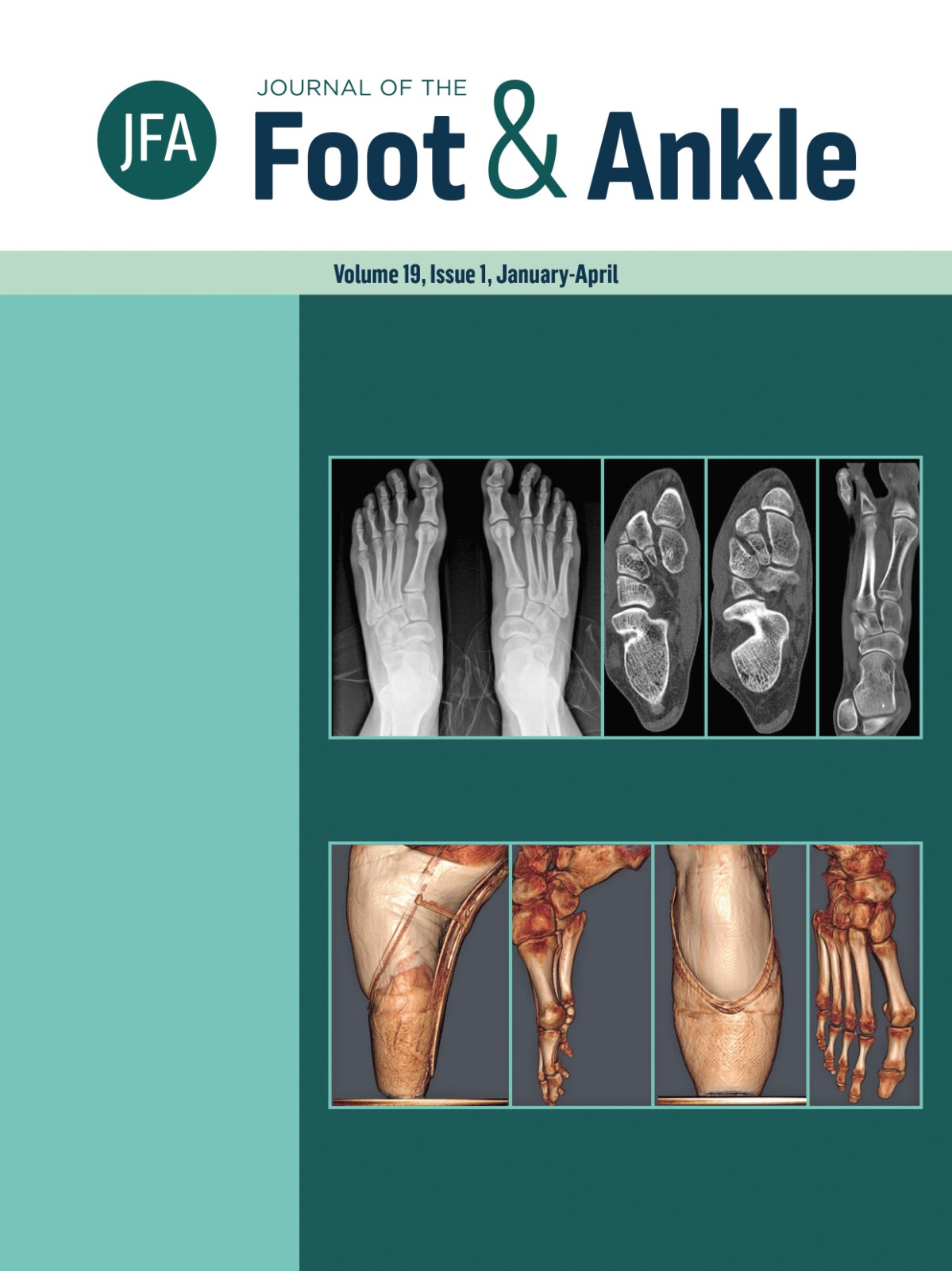Low serum vitamin D levels are not associated with pseudoarthrosis and implant loosening in ankle arthrodesis: a retrospective cohort study
DOI:
https://doi.org/10.30795/jfootankle.2025.v19.1878Keywords:
Pseudoarthrosis; Vitamin D deficiency; Arthrodesis; Ankle; HealingAbstract
Objective: Analyze the relationship between hypovitaminosis D and pseudoarthrosis and implant loosening after ankle arthrodesis. Methods: Retrospective and observational study using data extracted from the TriNetX international platform, including patients of both sexes, aged ≥ 18 years, undergoing tibiotarsal or tibiotalocalcaneal arthrodesis between 2016 and 2020, with at least one level of 25-hydroxyvitamin D in the perioperative period and one year of follow-up. Patients were divided into two groups: vitamin D deficiency (≤ 20 ng/ml) and no deficiency (> 20 ng/ml). Statistical analyses used logistic regression with propensity score matching, in addition to chi-square, Student’s t, and Log-rank tests. Results: Three hundred and six patients were selected for the study. After pairing, 72 patients were analyzed in each group. There was no statistically significant difference between the groups (adjusted OR = 0.878; 95% CI: 0.333-2.309; p = 0.7912). Similarly, there was no association between vitamin D deficiency and implant loosening/synthesis failure (adjusted OR = 1.017; 95% CI: 0.394-2.623; p = 0.9723). Conclusion: The results indicate that vitamin D deficiency is not significantly associated with the risk of pseudoarthrosis or implant loosening in the short term. While supplementation may be beneficial, its clinical impact remains to be further investigated. Level of evidence: II, Observational study.
Downloads
Published
How to Cite
Issue
Section
License
Copyright (c) 2025 Journal of the Foot & Ankle

This work is licensed under a Creative Commons Attribution-NonCommercial 4.0 International License.







